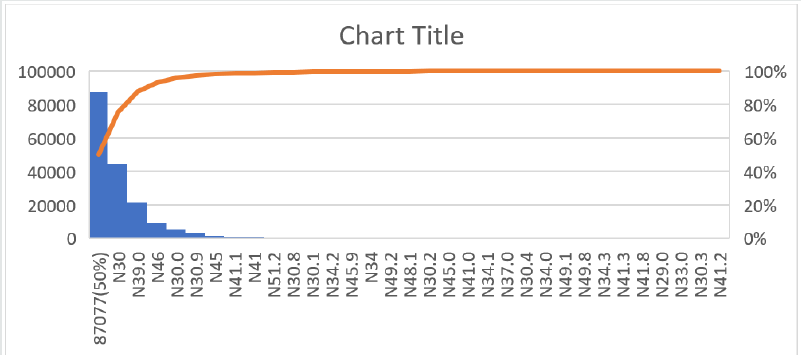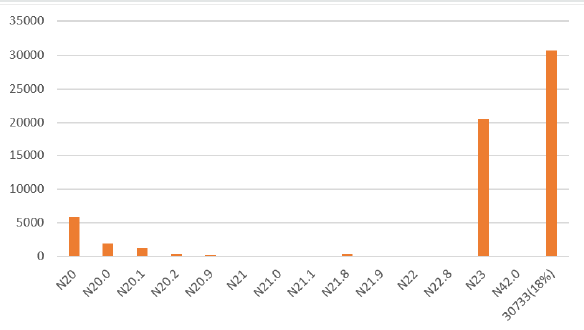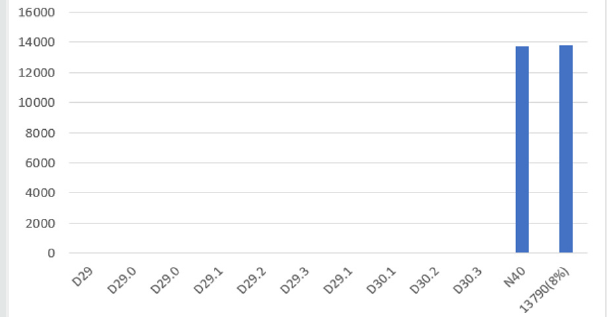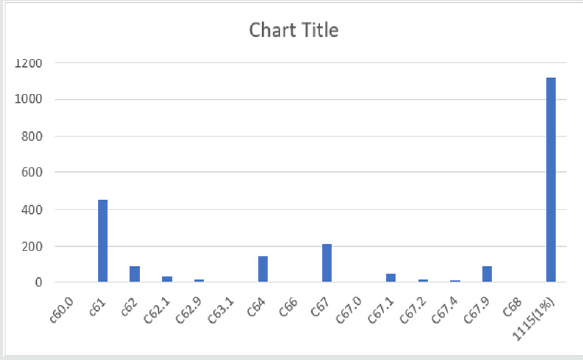
Lupine Publishers Group
Lupine Publishers
Menu
ISSN: 2641-1687
Research Article(ISSN: 2641-1687) 
Difficulties in Application of the International Statistical Classification of Diseases and Related Health Problems (ICD) and Distribution Rates for Urogenital Diseases Volume 2 - Issue 4
Dr. Huseyin Kocan*
- Department of Urology, Kanuni Sultan Suleyman Training and Research Hospital, Istanbul, Turkey
Received: January 09, 2020; Published: January 21, 2020
Corresponding author: Dr. Huseyin Kocan, Department of Urology, Kanuni Sultan Suleyman Training and Research Hospital, Istanbul, Turkey
DOI: 10.32474/JUNS.2020.02.000142
Abstract
Background: The ICD-10 coding system is commonly used in organizations providing health services in many countries. This coding system used for diagnosis of diseases is standardized for national and international diagnoses with the aim of determining incidence rates for diseases and acting as a guide for determination of health policies.
Aim: To determine the amount of ICD-10 diagnosis codes used for all patients attending our hospital in a 1-year period, the rates of ICD-10 related to urogenital system diseases and the distribution of urogenital system diseases.
Materials and methods: From 15/04/2018 to 15/04/2019, a total of 3,764,124 ICD-10 codes were recorded for diagnosis and treatment in all units of Kanuni Sultan Süleyman Education and Research Hospital. Of these, 174,448 (5%) were ICD-10 codes for the urogenital system and urogenital diseases and unused codes were recorded.
Results: Of the 196 ICD-10 codes related to urogenital diseases, 43 (22%) were not used, with 5% of total codes within a 1-year period related to urogenital system diseases and of these 50% were related to infectious diseases.
Conclusion: Regulation of the ICD-10 coding use certification programs standardized by the WHO will contribute to providing accurate national and international data. Our data shows that urogenital system infections have an important place in health spending. Informing the public about infectious diseases will contribute to reducing possible health spending and development of antibiotic resistance.
Keywords: ICD-10 code; urogenital system diseases; WHO; epidemiology
Introduction
The International Classification of Disease (ICD) system was developed for accurate follow-up of diseases in a population. Studies about coding related to diseases extend back to 1763 [1]. In 1948, the World Health Organization (WHO) gained responsibility for an international coding system for diseases [1,2]. Historically updated, the developed ICD coding system was published as ICD- 10 in 1992 [2]. This coding system used for diagnosis of diseases aimed to standardize national and international disease diagnoses. Additionally, this system aimed to add convenience to many areas like clinical research, financial analysis, statistics, risk management and health policies [1,2]. ICD-10 has an alpha-numeric code structure. The ICD-10 classification structure has five levels. Each level is a detailed form of the level above. The aim was to determine the total ICD-10 code amounts used in all units of İstanbul Kanuni Sultan Süleyman Education and Research hospital during a 1-year period, the amount of ICD-10 codes related to urogenital system diseases and the distribution of urogenital diseases to determine the usability of the ICD-10 coding system for urogenital system diseases.
Material-Method
From 15/04/2018 to 15/04/2019, a total of 3,764,124 ICD- 10 codes were recorded for diagnosis and treatment in all units of Kanuni Sultan Süleyman Education and Research Hospital. There were 174,448 (5%) ICD-10 codes for the urogenital system and urogenital diseases and unused codes were recorded.
Result
Within a 1-year period, 174,448 (5%) ICD-10 codes were used for urogenital system diseases. The distribution of urologic diseases according to ICD-10 is shown in Figure 1. Of the 196 ICD-10 codes related to urogenital diseases, 43 (22%) were not used. The unused ICD-10 codes are shown in Figure 2. There were 87,077 ICD-10 codes (50%) used for urogenital infections and the distribution is shown in Figure 3. For stone disease related to the urogenital system, 30,733 (18%) ICD-10 codes were used and the distribution is shown in Figure 4. There was a total of 13,790 ICD-10 codes (8%) used for benign tumors of the urogenital system, with the distribution shown in Figure 5. A total of 1115 ICD-10 codes (1%) were used for urogenital system malignant tumors, with the distribution shown in Figures 6 & 7.
Figure 7: a urogenital system malignant tumors b urogenital system benign tumors c diseases related to urogenital system stone disease d other urogenital system diseases e urogenital system infections.
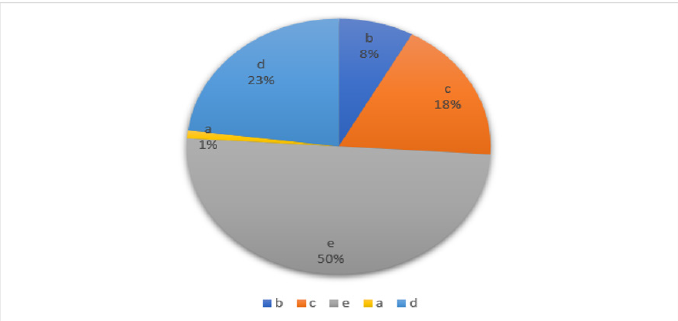
Discussion
The aim of the universally accepted ICD coding system,
including internationally accepted revisions and updates, is to
ease comparability of international morbidity data, to allow more
efficient use of international resources and to create a coding
system with reduced omissions and errors [2,3]. The ICD-10
revision presents a 21st century classification [3]. In recent years,
many countries commonly use this coding system for research and
surveillance [4]. In Turkey, health organizations have commonly
used the ICD coding system for the last 20 years. One of the basic
problems with this coding system is that due to the excess of
thousands of disease code numbers, it appears codes are written
for a broader disease group instead of the real code for the disease.
Another problem with this coding system is that use is made more
difficult as it requires definition according to all criteria of a disease
[3]. This study focused on the main diagnosis codes for disease
coding supporting the problems defined for the ICD coding system.
A study by Jetté et al. found 92.4% correct use of the diagnostic
coding in the International Classification of Disease (9th edition)
for male infertility [5]. A study of the emergency service found
the ICD-10 coding system used for epilepsy had 100% positive
predictive value (PPV), with 75% PPV found for epilepsy subtypes
[6]. Our data focused on main diagnostic codes and a reduction in
this rate was observed for disease coding subtypes.
A study by Tollefson et al. assessed International Classification
of Disease (9th edition) data for functional outcomes like urine
leakage and erectile dysfunction after radical prostatectomy and
found weak correlation with confirmed survey data [7].
Additionally, another problem related to coding is that many
countries modify the ICD codes independent of the WHO which
appears to be a significant obstacle to comparison of international
data [4].
The World Health Organization updates and revises the ICD
coding system. Based on present problems, updating and planning
training programs will increase the success rates for use of ICD
coding.
Conclusion
Regulation of standardized ICD-10 code use certification programs for health professionals by WHO will contribute to ensuring accurate national and international data. Our data show urogenital system infections have an important place in health spending. Informing the public about infections will contribute to reducing health spending and development of antibiotic resistance.
Ethics Committee Permission
Permission was granted by the Clinical Research Ethics Committee of Health Sciences University İstanbul Education and Research Hospital. Decision no: 1843, date 24/05/2019.
Conflict of Interest
The author reports no conflicts of interest. The author alone is responsible for the content and writing of the paper.
References
- Hirsch JA, Nicola G, McGinty G, Liu RW, Barr RM, et al. (2016) ICD-10: History and Context. AJNR Am J Neuroradiol37(4):596-599.
- World Health Organization: History of the Development of the ICD.
- Gersenovic M (1995) The ICD family of classifications. Methods Inf Med, 34(1-2):172-175.
- Jetté N, Quan H, Hemmelgarn B, Drosler S, Maass C, et al. (2010) IMECCHI Investigators. The development, evolution, and modifications of ICD-10: challenges to the international comparability of morbidity data. Med Care 48(12):1105-1110.
- Khandwala YS, Zhang CA, Li S, Cullen MR, Eisenberg ML (2017) Validity of Claims Data for the Identification of Male Infertility. Curr Urol Rep 18(9):68.
- Jetté N, Reid AY, Quan H, Hill MD, Wiebe S (2010) How accurate is ICD coding for epilepsy? Epilepsia. 51(1):62-69.
- Tollefson MK, Gettman MT, Karnes RJ, Frank I (2011) Administrative data sets are inaccurate for assessing functional outcomes after radical prostatectomy. J Urol 185(5):1686-1690.

Top Editors
-

Mark E Smith
Bio chemistry
University of Texas Medical Branch, USA -

Lawrence A Presley
Department of Criminal Justice
Liberty University, USA -

Thomas W Miller
Department of Psychiatry
University of Kentucky, USA -

Gjumrakch Aliev
Department of Medicine
Gally International Biomedical Research & Consulting LLC, USA -

Christopher Bryant
Department of Urbanisation and Agricultural
Montreal university, USA -

Robert William Frare
Oral & Maxillofacial Pathology
New York University, USA -

Rudolph Modesto Navari
Gastroenterology and Hepatology
University of Alabama, UK -

Andrew Hague
Department of Medicine
Universities of Bradford, UK -

George Gregory Buttigieg
Maltese College of Obstetrics and Gynaecology, Europe -

Chen-Hsiung Yeh
Oncology
Circulogene Theranostics, England -
.png)
Emilio Bucio-Carrillo
Radiation Chemistry
National University of Mexico, USA -
.jpg)
Casey J Grenier
Analytical Chemistry
Wentworth Institute of Technology, USA -
Hany Atalah
Minimally Invasive Surgery
Mercer University school of Medicine, USA -

Abu-Hussein Muhamad
Pediatric Dentistry
University of Athens , Greece

The annual scholar awards from Lupine Publishers honor a selected number Read More...






